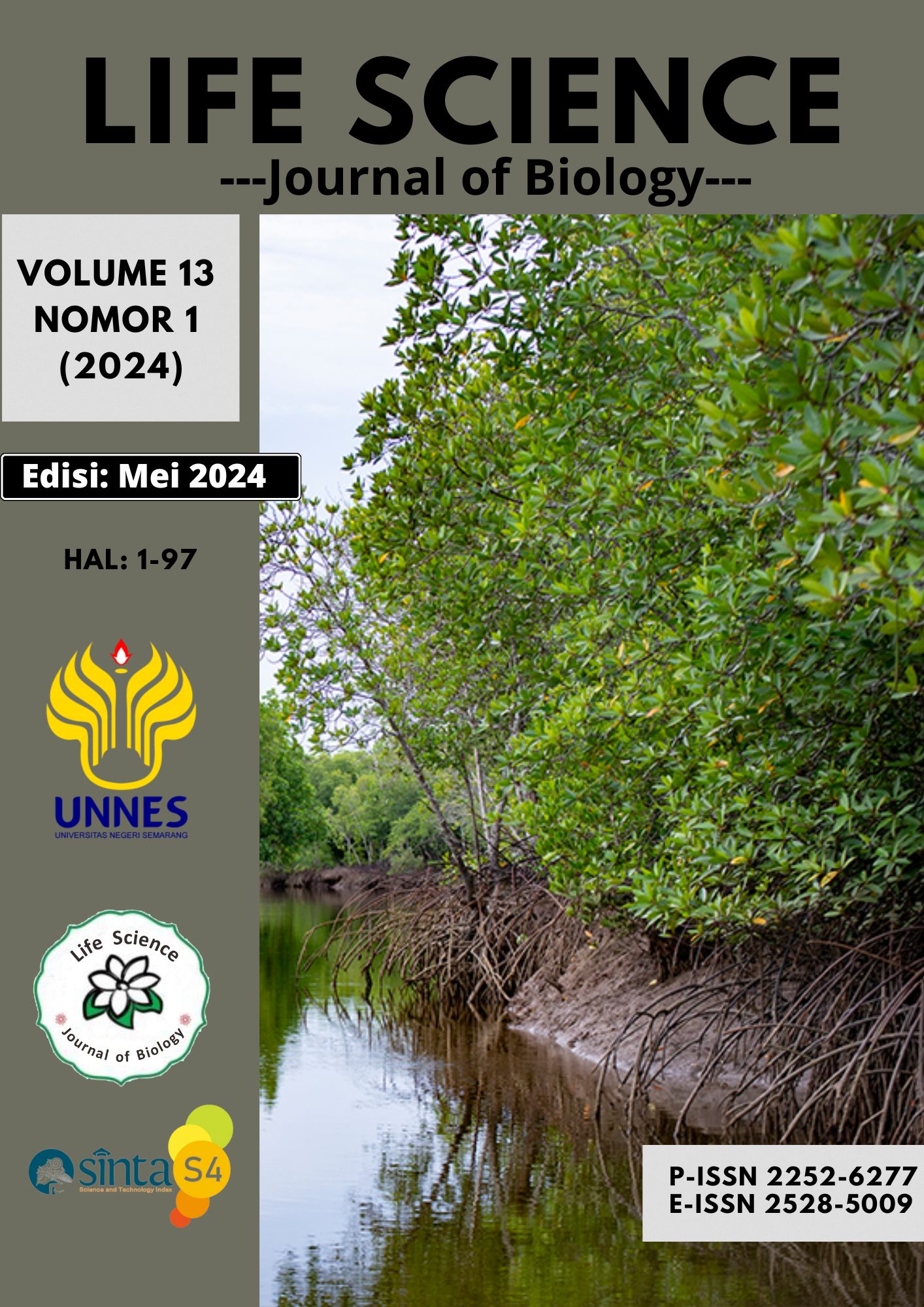Karakter Anatomi dan Kandungan Pigmen Daun Mangga Wirasangka (Mangifera indica var. Wirasangka)
Main Article Content
Abstract
Wirasangka mango is the identity flora of Tegal Regency. The morphological characters of the wirasangka mango have been studied, but need to be supplemented with anatomical characters. The anatomical character of the plant that needs to be studied is the anatomy of the leaves. Leaves have varying tissue structures and pigment content. This study aims to describe the anatomical characters and analyze the pigment content of wirasangka mango leaves. The characteristics and pigment content of wirasangka mango leaves have never been reported. Anatomical characters of mango wirasangka leaves were determined by cross-sectional leaf preparations using non-embedding method and whole mount leaf preparations. The pigment content of mango wirasangka leaves was analyzed using a spectrophotometer. The results of the study of the anatomical characters showed that the leaves of wirasangka mango have dorsiventral and hypostomatous leaf, have a palisade ratio of 4-5 cells, stomata are anomocytic type, guard cell length is 11.45 µm and guard cell width is 4.78 µm, and has a stomatal density of 173.25 /mm2. The chlorophyll content of shoots, young and mature leaves of wirasangka mango were 9.1 mg/l, 12.28 mg/l and 47.89 mg/l. The carotenoid content of shoots, young leaves and mature leaves were 293.51 µmol/g, 371.76 µmol/g, and 1445.88 µmol/g respectively, and the anthocyanin content of shoots, young leaves and mature leaves were respectively also 1.36 mg/100g, 0.75 mg/100g, and 0.38 mg/100g. The results of the research can be used to complete the characters that need to be observed in the characterization of wirasangka mango.


